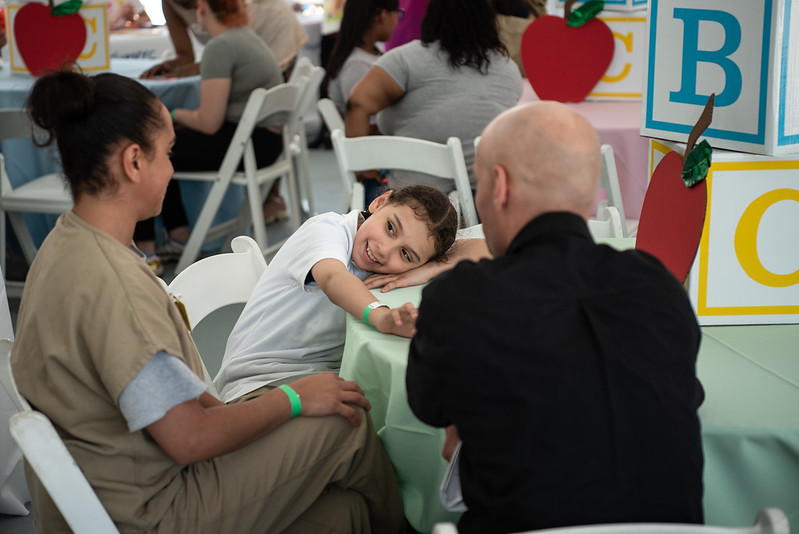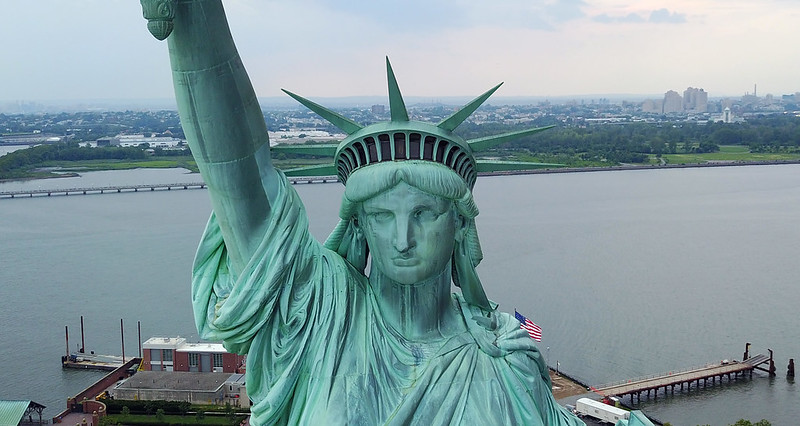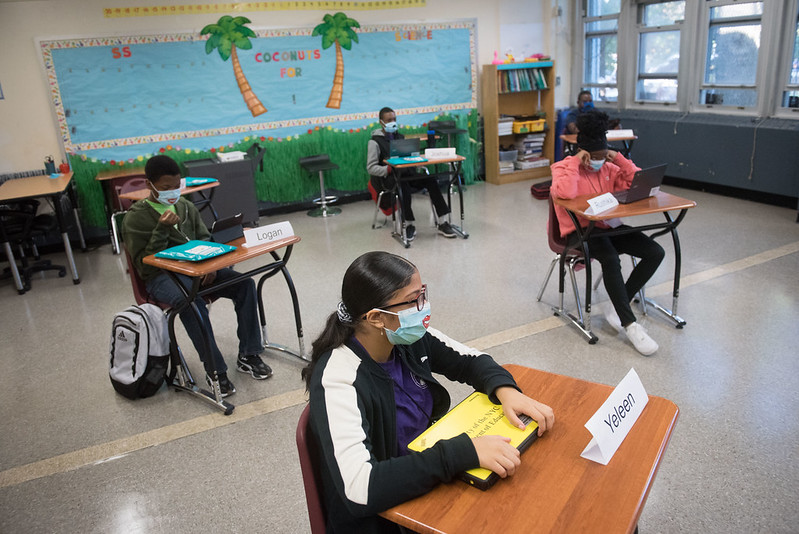Now’s the Time to Invest More, Not Less, in New Yorkers’ Mental Health

New Yorkers in need (photo: Michael Appleton/Mayor's Office)
Governor Andrew Cuomo has long-championed himself a progressive criminal justice reformer, committing his administration to “creating a fairer, safer, and more just system for all New Yorkers.” Yet his proposed 2021-2022 budget sharply contradicts this vision.
Not because he plans to continue closing state prisons as the incarcerated population drops. Though, we oppose his request for the ability to shutter correctional facilities with far less notice than the existing one-year requirement. When a closure looms, communities, inmates, and inmates’ families need ample time to make life-changing decisions.
Cuomo’s proposed budget is counterproductive because it would slash state-sponsored mental health and at-risk youth services, the very alternatives to incarceration needed to further reduce jail and prison populations. He wants to cut a whopping 446 positio ns at the Office of Mental Health due to attrition and nearly 300 inpatient beds for those with severe mental illness.
If anything, we should be investing more in these public services, especially during the pandemic and its aftermath. Rather than forcing the most vulnerable New Yorkers to shoulder the brunt of a sputtering economy, we should be leaning on those who can afford to pay more in taxes.
One of us is a parole officer and the other a licensed social worker. We’ve seen firsthand how our criminal justice system is deeply intertwined with our mental health system.
This is no exaggeration: Jails have become New York’s biggest mental health institutions. Rikers and other New York City jails have more patients with a mental health disorder than all the city’s hospitals. Statewide, some 15% of state prison and 26% of municipal jail inmates and detainees suffer from serious psychological distress, numbers far exceeding the non-incarcerated population (5%).
The proposed state cuts are the latest in a decades-long trend that has left people living with mental illness more likely to be arrested and incarcerated than receive the care they need. Between 2010 and 2016, New York’s public psychiatric beds were cut by 35%. Since 2010, staffing at the state’s Office of Mental Health (OMH) has been cut 17%, while staffing levels at the state’s Office for People with Developmental Disabilities has been slashed 15%.
The recent subway attack in New York City put human faces on these abstract statistics. Rigoberto Lopez, who allegedly stabbed and killed four people, was believed to be suffering from a mental illness when he was arrested multiple times in recent years. One of his victims in the stabbing had recently been hospitalized in a psychiatric ward.
One of the more worrying cuts is the proposed closure of Rockland Children’s Psychiatric Center in Orangeburg. This would force children and youth who require intensive, inpatient care for severe illnesses such as bipolar disorder to be relocated to the Bronx. It would also force families to travel further to stay involved in their child’s care.
Shifting to “brief, intensive, community-based care” sounds promising on paper. But the experiences of other states show that privatization of mental health care is a fool’s errand.
In 2015, then-Iowa Governor Terry Branstad drew fierce criticism for closing two state psychiatric hospitals, forcing elderly patients to move to private nursing homes. The criticism was warranted. Three longtime patients from one of the hospitals died shortly after being transferred.
When Utah considered privatizing forensic psychiatric care in 2010, its state legislature determined that cost savings may only result from reducing staff compensation, which could lead to high turnover rates and increased harm to patients.
In 2017, Alaska commissioned a study to find out whether privatizing a psychiatric facility would save money but concluded: “Our findings demonstrate that continued state management is not only the most advantageous route for generating overall cost savings, but that it also avoids many of the risks involved in contracting out the management of critical public infrastructure.”
Relying on our already-strained criminal justice system for mental health care isn’t working. We should invest in and expand services for our most vulnerable.
And we can afford it. Middle-class and low-income New Yorkers currently pay higher effective tax rates than billionaires and multi-millionaires. Let’s fix that and fund the important public services that keep our state safe, healthy, and thriving.
Governor Cuomo quoted himself at the top of his pandemic poster: “Wake up, America. Forget the politics, get smart.” Let’s wake up. Cutting and privatizing mental health care isn’t the smart thing to do.
***
Wayne Spence is a parole officer and Randi DiAntonio is a social worker. Spence is also the president of the Public Employees Federation (PEF), a union representing more than 50,000 New York State employees, including almost 6,000 at the Office of Mental Health. DiAntonio is a vice president of PEF, which is part of NYS Fund Our Future: A coalition of union, community and thought leaders building a thriving New York by making the case for government in the public interest. On Twitter @NYSPEF.
***
Have an op-ed idea or submission for Gotham Gazette? Email This email address is being protected from spambots. You need JavaScript enabled to view it.
New York Leadership Must Continue Supporting Pro-Immigration Policies While Washington Works on a Path to Citizenship

Statue of Liberty (photo: Kevin P. Coughlin/Governor's Office)
New York has long been recognized as a starting place for immigrants to discover new opportunities. However, we have strayed over the years from our nation’s values — especially as it relates to immigration policy.
Thankfully, members of New York’s congressional delegation — especially Reps. Nydia Velazquez and Yvette Clarke — are leading the charge to ensure a key group of undocumented immigrants have a pathway to citizenship. This is, however, just one step toward getting our broken federal immigration system back on track, which will take some time. In the short term, it is imperative that state elected officials and policy-makers continue to protect this vulnerable population.
Years of the Trump administration’s anti-immigration policies and rhetoric exacerbated immigrant communities’ many vulnerabilities, especially for undocumented immigrants who comprise about 15% of New York’s immigrant population. The coronavirus pandemic only made matters worse, resulting in a troubling increase in incidents in which vulnerable individuals required legal representation, from domestic abuse to housing evictions.
While some programs, policies, and initiatives were established to prevent the exploitation of New York immigrants, many undocumented individuals were continuously marginalized and often afraid to see k help due to fear of deportation.
New York’s state budget, due April 1, is on track to include $10 million to continue a critical program – the Liberty Defense Project, which provides free legal services to immigrants in need. This first-in-the nation initiative was created in 2017 as immigrants were facing four long and difficult years with Donald Trump’s arrival in the White House.
This program remains important as undocumented individuals have been largely excluded from state and federal aid packages throughout the pandemic, resulting in a host of legal challenges – from eviction and deportation to bankruptcy and domestic incidents.
But the Liberty Defense Project and similar efforts are merely a temporary fix. We need a permanent solution in the form of a pathway to citizenship for the millions of immigrants who serve our communities and keep our economy running.
The nation has begun to turn the page on immigration reform. Recent passage by the House of Representatives of two bills that would establish paths to citizenship or legal status for millions of undocumented immigrant — including the Dreamers, those brought to the country unlawfully as children, as well as farm workers – indicates progress.
One of these bills, the American Dream and Promise Act, would help about 28,180 young immigrants across the nation currently protected under the Deferred Action for Childhood Arrivals (DACA) program. That includes 9,200 workers deemed essential during the pandemic, including health-care providers, teachers, sanitation and food industry workers.
These same essential workers would receive additional on-the-job protections through the state-level NY HERO Act. This legislation, which recently passed the state Senate, requires employers to establish health and safety standards for COVID-19 and other airborne infectious diseases in the workplace.
This is one example of a concrete step state lawmakers can take to protect vulnerable New Yorkers – including immigrants – while we await further action in Washington. The Assembly should quickly follow the Senate’s lead and pass the NY HERO Act without delay.
It is imperative that members of the U.S. Senate, especially Majority Leader Chuck Schumer, New York’s senior senator, finish what the House has started and approve the American Dream and Promise Act and the Farm Workforce Modernization Act. While these initiatives make their way through the legislative process in Washington, New York must continue to live up to its reputation as a progressive leader by protecting the more than 4.3 million immigrants who call the state home.
Until a federal path to citizenship becomes a reality, state lawmakers must continue working to protect undocumented immigrants while also benefitting all New Yorkers. The hardworking men and women who have kept us safe throughout the pandemic and contributed for years to our economy deserve nothing less and cannot wait any longer for action.
***
Camille Mackler is executive director of Immigrant ARC, a nonprofit organization that mobilizes New York’s network of legal service providers by facilitating communication and information sharing to better support immigrant communities. On Twitter @cmackler and @immigrantarc.
***
Have an op-ed idea or submission for Gotham Gazette? Email This email address is being protected from spambots. You need JavaScript enabled to view it.
The State Can’t Again Take Federal Funding Meant for New York City Schools

Students in school (photo: Michael Appleton/Mayoral Photography Office)
Here's the deal: This time last year, the New York City Department of Education closed schools for in-person learning because of the early devastation COVID-19 was causing in New York. While we all understood this was necessary, what happened next was a completely inappropriate and very unnecessary response to that closure by the State.
The New York City public school system closed for in-person learning during the home stretch of negotiations over
the 2020-2021 New York state budget. These negotiations are normally a hectic time for legislators, the Governor, and communities alike. But with a closed New York City school system, hundreds of schools and over a million students and families were anxious to know what education was going to look like for the foreseeable future. The State Legislature and Governor Cuomo were also desperately trying to figure out how to fund the shift to remote learning.
In that context, the federal government stepped in with the CARES Act to lessen the burden by allocating emergency funding for states to transition to remote learning. That relief, however, came with a caveat: new funding was supposed to be used to supplement education. It was supposed to be used "in addition to" and not "instead of." The result? Something called a "pandemic adjustment" that supplanted normal education funding with CARES Act funding — essentially, the state took education funding intended for the city.
This pandemic adjustment coupled with the "20% withholding" stunt the governor pulled right before schools reopened resulted in very real resource challenges at the Department of Education. The "furloughs” that followed for managerial and nonunion Department of Education employees caused financial hardships on some district staff like Education Council Administrative Assistants that had to go unpaid for a week at a time when none of us could afford to.
As the State Legislature and Governor Cuomo consider the 2021-2022 state budget, which is due by April 1, and funding priorities for a new round of federal relief are on the horizon, we must not repeat recent history. We must not repeat adjusting the budget on the backs of our children and families. The final New York state budget must not take hundreds of millions of dollars in federal education aid meant for New York City.
Instead, we must have access to the full state and federal education funding in order to build on the long-term investment made to bridge the digital divide with 500,000 iPads and provide additional access to technology and broadband for low-income students and families to support them in remote learning environments, not to mention the fact that every child and family needs such access even when students are in school five days a week.
We must expand funding for language access for English language learners who have had difficulty receiving comprehensive technical support in their native languages. We must provide additional funding for students with disabilities who have been unable to receive continuous in-person access to the therapy and related services they need. We must provide additional funding to help Black and brown communities across this city who have disproportionately suffered extraordinary trauma and loss due COVID-19. We must provide additional resources to support education for incarcerated minors who have languished in jails during this pandemic. We must also provide additional resources for all our parents to support our children's education, especially but not only due to our new roles as remote educators.
In addition to an investment in people, we must also make a massive investment in our education infrastructure. We must invest in the wholesale repair, upgrade, and modernization of our aging school buildings. We must invest in new school buildings that can safely accommodate students with disabilities. We must provide our children return to spacious classrooms, modern facilities, clean drinking water, and contaminant-free air. And we must invest in infrastructure that ensures that we never disconnect any child from the education to which they have a right.
Our children and families need additional resources, especially as this pandemic's long-term impact on our system becomes more evident. As we consider the different supports that our students, families, and school communities need, we must do so with an understanding that this is a long-term process. Given the recently-offered one-house budgets released by the State Assembly and Senate, we see that the New York State Legislature is with us in our fight, but it must be made clear: it is time for the Governor to do his part. He must not supplant federal funding at the expense of our students’ and families' futures. No more schemes or "pandemic adjustments." The new state budget must fully fund our schools and provide the additional resources necessary so our children may have access to a high-quality education.
***
Thomas C. Sheppard is the Community Education Council Presidents’ Appointee on the New York City Panel for Educational Policy (PEP). On Twitter @TomCSheppard.
***
Have an op-ed idea or submission for Gotham Gazette? Email This email address is being protected from spambots. You need JavaScript enabled to view it.




